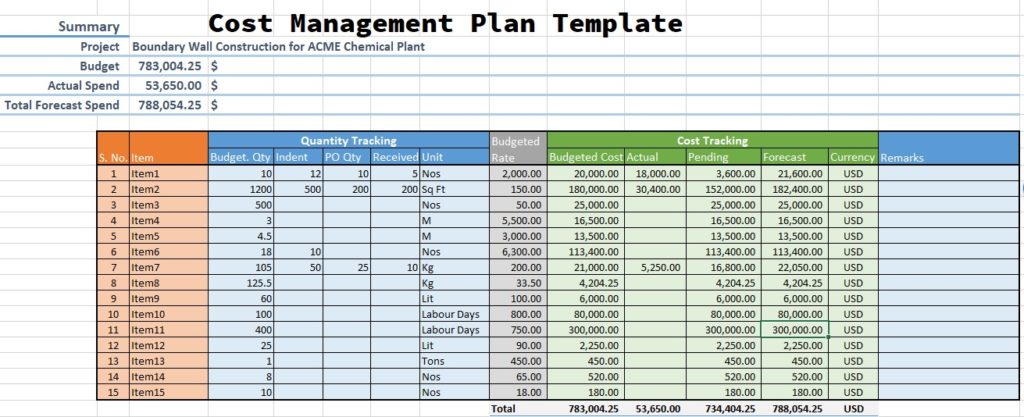In project management, the process of estimation, allocation, and control of the costs of the project is known as a cost management plan. For effective management of the project costs, Cost Management Plan Template is used by project managers.
Thank you for reading this post, don't forget to subscribe!In the estimation phase, the prediction of costs is developed for each activity of the project to allocate the budget based on these predictions. After the allocation of budget, it is important to control the costs keeping in the budgeted limit for each activity during project implementation.
During the project planning phase, the estimated expense for each activity is calculated and approved before the implementation phase. These expenses are documented and tracked to keep the budget within the cost plan.
At the end of the project, budgeted costs and actual costs are compared for future reference and reviewing the cost management plan for coming activities.
What is the Cost Management Plan Template?
The cost management plan is a process of designing policies, and procedures for estimating, managing, and controlling the costs of the project. This cost management plan is designed for all kinds of project resources, involving human resources, materials, services, tools, and equipment.

There are two main purposes served by the cost management plan template. These templates are helpful and provide guidelines for estimation and allocating the budget for each project activity.
A cost management plan provides a cost baseline for the project if everything goes perfectly and no change is requested over the project lifecycle. It is expected that the project will meet the allocated budget target.
Key Components of the Cost Management Plan Template:
Cost Management Templates are readily used for planning, managing, and controlling project costs. These templates are very user-friendly and easy to use. Although, there are several details present on the cost management plan template sheet. However, a few of the key components of the cost management templates are;
- Cost Variance Plan
- Cost Management Approach
- Cost Estimation
- Cost Baseline
- Cost Control and Reporting Process
- Change Control Process
- Project Budget
Steps of Cost Management in PMBOK:
The most authorized books of project management, known as “The Project Management Body of Knowledge” define four major steps of managing project costs. These steps stick to the following sequence as the project enters into the execution phase after planning.
Resource Planning: It’s involved in the project definition phase. It defines the project work breakdown structure; all the deliverables and activities of the project. Identification of all the activities is required for the estimation of the project budget.
Cost Estimation: In this step, cost projections for all the deliverables and activities defined in the resource planning stage are made to calculate the total cost of the project. Several techniques and tools are used for the purpose of estimation.
Cost Budgeting: After developing the project cost estimations. Project budgeting is done, and funds are released during project executions as per the final budget plan.
Cost Control: During the project lifecycle, the actual costs of the project are compared with the estimated baseline costs for the activities, and abnormalities are monitored and controlled. The cost control process also involves the process of decision making if the cost variations are acceptable or not, based on the stated reasons.
Format of Cost Management Plan Template
Below there are some key points that must be included in this management planning;

- Project Cost Management Approach
- Cost Estimation.
- Budget Determination.
- Cost Management Roles & Responsibilities.
- Cost Performance Measurement.
- Cost Variance Response Process.
- Cost Change Control Process.
- Acceptance.
Here is a brief description of these points. In the first step, we describe the project mission, goals, causes, benefits, scope, etc. After that, we decide which cost management template or tool we can use for tracking, evaluation. In the third step of we make a cost estimation. The fourth phase involves setting the budget for the project.
We set management roles and responsibilities for costing, like who is responsible for analyzing cost.
The remaining steps involve maintaining, monitoring, and controlling.




